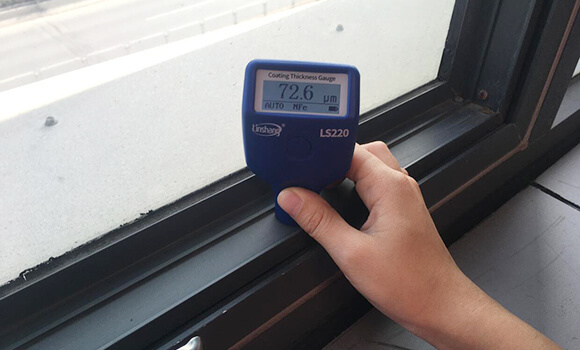Paint Thickness Tester Principles
1. Principle of magnetic measurement (Hall effect)
The Hall effect is to generate a voltage difference (Hall voltage) across an electrical conductor, transverse to the current in the conductor and the magnetic field applied perpendicular to the current. The Hall factor is defined as the ratio of induction. The electric field is the product of the current density and the applied magnetic field. It is a characteristic of the material from which the conductor is made, because its value depends on the type, quantity, and nature of the charge carriers that make up the current.
Both steel and iron are magnetic metals. When measuring some car bodies made of steel and iron, a magnetic thickness method is used to measure the paint film thickness. More paint thickness tester probes are used to measure the paint film thickness covering the surface by measuring the magnetic path through the paint layer and the automobile substrate.
2. The principle of eddy current measurement
Some all-aluminum bodies use both steel and aluminum materials, making the car more dynamic. The paint film thickness of the all-aluminum body can’t be measured using the magnetic method described above, but it can be measured by the eddy current method. The probe of eddy current paint thickness tester can generate a high-frequency electromagnetic field, which will generate eddy current when measuring aluminum materials. Then calculate the car paint film thickness by measuring the eddy current and phase.
The paint thickness tester using the eddy current principle can measure the non-conductive coating thickness on all non-magnetic coatings, such as aerospace surfaces, vehicles, paint, plastic coating and anodized film for household appliances, aluminum alloy doors and windows and other aluminum surfaces.
- High precision coating thickness gauge for used car
- Automotive paint protection films coating thickness gauge
- Plating Thickness Measuring Instrument for Detecting Anti-corrosion Coating
- Linshang LS220, LS191, LS160A– Necessary for Car Cover Inspection
- Coating Thickness Gauge for Second Hand Vehicle
- Zero Adjustment Step of Coating Thickness Gauge
